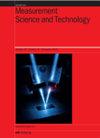Contribution of BDS-3 observations to the precise orbit determination of LEO satellites: A case study of TJU-01
IF 3.4
3区 工程技术
Q1 ENGINEERING, MULTIDISCIPLINARY
引用次数: 0
Abstract
The precise orbit determination (POD) of scientific low Earth orbit (LEO) satellites is a prerequisite for the successful implementation of scientific missions. In recent years, global navigation satellite systems have become the main means of determining the orbits of LEO satellites. The global navigation satellite system receiver onboard the Tianjin University No. 1 (TJU-01) satellite receives both GPS and BDS-2/3 signals, with the addition of BDS-2/3 observations playing an important role in improving the POD of LEO satellites. This study comprehensively analyzes the spaceborne GPS/BDS data quality, including BDS-2/3 and GPS code multipath errors. Appreciable code multipath errors are found for the B1I signal of BDS-2 medium Earth orbit (MEO) satellites at elevations higher than 40°, whereas slight near-field relevant multipath errors of both frequencies are found for GPS and BDS-3 MEO satellites. The GPS and BDS-2/3 code multipath errors are estimated through elevation/azimuth-relevant piece-wise modeling and applied in the POD calculations. Several schemes, namely GPS-based, BDS-based, BDS-based without geo-synchronous (GEO) satellites, and GPS/BDS combined schemes, are designed to evaluate the POD performance. Fourteen days of data are calculated and the average three-dimensional (3D) orbital root mean square (RMS) of orbit overlapping differences obtained from GPS-based and BDS-based POD (without GEO satellites) solutions are 37.4 and 27.1 mm, respectively. The BDS-based solutions are obviously better than the GPS-based solutions, mainly owing to better data availability. The GPS/BDS combined solutions have the best accuracy, with a 3D RMS value of 20.6 mm. In addition, when BDS GEO satellites are included, the 3D RMS of the overlapping orbit differences reduces to 32.9 and 27.4 mm for BDS-based and GPS/BDS combined solutions, respectively. Double-difference (DD) and single-difference (SD) integer ambiguity resolution (IAR) are adopted to further improve the POD performance. The fixed orbit of the TJU-01 satellite is solved through DD IAR and SD IAR, and the contribution of the TJU-01 satellite to ambiguity fixing is analyzed. Relative to the float solution, the improvements made using the two ambiguity fixing approaches are equivalent, both being approximately 13%. The importance of this research is not only the precise determination of the orbit of TJU-01 for occultation service but also the demonstration of the contribution of BDS observations to the performance of the POD of LEO satellites.BDS-3 观测对低地球轨道卫星精确定位的贡献:TJU-01 案例研究
低地球轨道(LEO)科学卫星的精确轨道测定(POD)是成功执行科学飞行任务的先决条件。近年来,全球卫星导航系统已成为确定低地轨道卫星轨道的主要手段。天津大学一号卫星(TJU-01)上搭载的全球导航卫星系统接收机同时接收 GPS 和 BDS-2/3 信号,其中 BDS-2/3 观测数据的加入对提高低地轨道卫星的 POD 起到了重要作用。这项研究全面分析了空间 GPS/BDS 数据质量,包括 BDS-2/3 和 GPS 代码多径误差。发现 BDS-2 中地球轨道(MEO)卫星的 B1I 信号在海拔高于 40° 时存在明显的代码多径误差,而 GPS 和 BDS-3 中地球轨道卫星的两个频率都存在轻微的近场相关多径误差。全球定位系统和 BDS-2/3 代码多径误差是通过与海拔/方位相关的片断建模估算出来的,并应用于 POD 计算。为评估 POD 性能,设计了几种方案,即基于 GPS 的方案、基于 BDS 的方案、基于 BDS(不含地球同步(GEO)卫星)的方案和基于 GPS/BDS 的组合方案。计算了 14 天的数据,基于 GPS 的 POD 方案和基于 BDS 的 POD 方案(不含地球同步轨道卫星)得到的轨道重叠差的平均三维(3D)轨道均方根(RMS)分别为 37.4 毫米和 27.1 毫米。基于 BDS 的解法明显优于基于 GPS 的解法,这主要是由于数据可用性更好。GPS/BDS 组合方案的精度最高,三维均方根值为 20.6 毫米。此外,当包括 BDS 地球同步轨道卫星时,基于 BDS 和 GPS/BDS 组合解法的重叠轨道差的三维均方根值分别降低到 32.9 毫米和 27.4 毫米。采用双差分(DD)和单差分(SD)整数模糊分辨率(IAR)进一步提高了 POD 性能。通过 DD IAR 和 SD IAR 求解了 TJU-01 卫星的固定轨道,并分析了 TJU-01 卫星对模糊固定的贡献。与浮动解法相比,两种模糊性修正方法的改进效果相当,都约为 13%。这项研究的重要性不仅在于精确确定了用于掩星服务的 TJU-01 的轨道,还在于证明了 BDS 观测对低地球轨道卫星 POD 性能的贡献。
本文章由计算机程序翻译,如有差异,请以英文原文为准。
求助全文
约1分钟内获得全文
求助全文
来源期刊

Measurement Science and Technology
工程技术-工程:综合
CiteScore
4.30
自引率
16.70%
发文量
656
审稿时长
4.9 months
期刊介绍:
Measurement Science and Technology publishes articles on new measurement techniques and associated instrumentation. Papers that describe experiments must represent an advance in measurement science or measurement technique rather than the application of established experimental technique. Bearing in mind the multidisciplinary nature of the journal, authors must provide an introduction to their work that makes clear the novelty, significance, broader relevance of their work in a measurement context and relevance to the readership of Measurement Science and Technology. All submitted articles should contain consideration of the uncertainty, precision and/or accuracy of the measurements presented.
Subject coverage includes the theory, practice and application of measurement in physics, chemistry, engineering and the environmental and life sciences from inception to commercial exploitation. Publications in the journal should emphasize the novelty of reported methods, characterize them and demonstrate their performance using examples or applications.
 求助内容:
求助内容: 应助结果提醒方式:
应助结果提醒方式:


